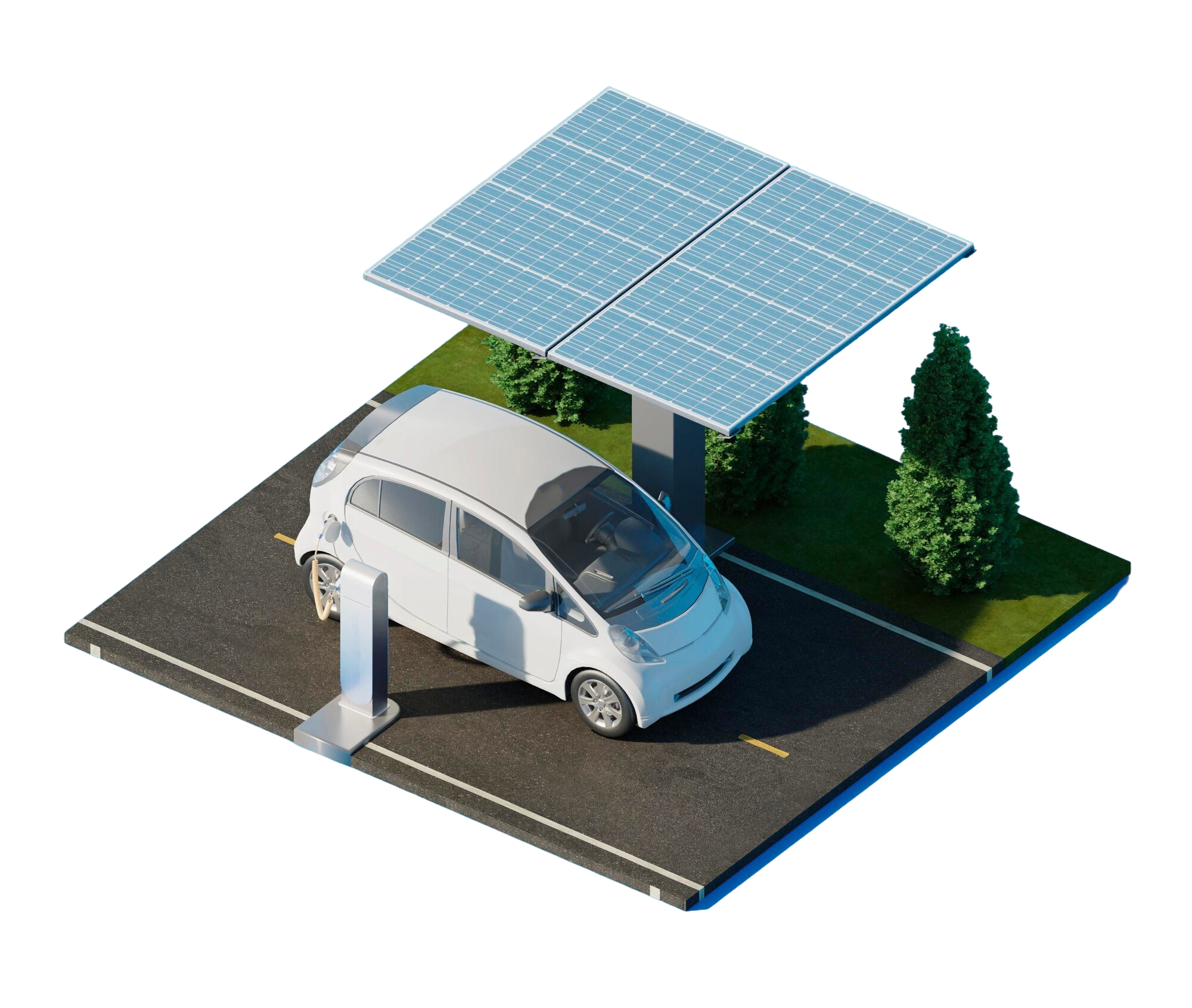Electric mobility is accelerating in India—and pairing EVs with solar energy takes the green advantage further. Here’s how solar-powered charging stations can lead to sustained cost savings and environmental benefits for Indian vehicle owners.
Solar + EV = Nearly Zero-Cost Mobility
When you charge an electric vehicle using solar power, you’re tapping into free, renewable energy straight from the sun—a perfect match for Kerala’s climate. Unlike grid electricity, which may still rely on fossil fuels and fluctuates in price, solar power offers predictable and affordable energy over time.
Here’s the cost benefit in numbers:
• On average, solar EV charging reduces per-unit cost by 40–60% compared to grid electricity.
• Once your solar system is paid off (typically in 3–5 years), your EV can run for virtually zero cost, except for minimal maintenance.
This combination isn’t just great for your wallet—it’s a major step toward a cleaner, greener Kerala.

Where Clean Energy Meets the Future of Mobility
As India moves toward a greener tomorrow, the fusion of solar energy and electric mobility is redefining how we drive. By harnessing the sun’s power, EV owners can unlock cleaner, smarter, and more cost-efficient transportation—making sustainability not just a choice, but the new standard for mobility.
How Much Solar Do You Need?
The ideal solar system size depends on your vehicle type and charging frequency. Here’s a practical guide based on current Indian EV models:
2-Wheelers (Electric Scooters/Bikes):
A 3 kW solar system is more than sufficient to fully charge an electric two-wheeler daily—perfect for urban users and delivery riders.
Electric Cars (Tata Nexon EV, MG ZS EV, etc.):
A 5–7 kW system can comfortably charge your EV for daily commuting needs while still powering basic household requirements.
Commercial Fleets or EV Charging Stations:
For commercial operators or homes with multiple EVs, a 10–15 kW solar system with smart metering and battery backup is ideal. This setup ensures maximum efficiency and energy storage.
With smart solar planning and daytime charging during peak sun hours, EV owners can take full advantage of solar energy—even during Kerala’s monsoons thanks to hybrid system support.
JM Green’s EV-Compatible Solar Solutions
When analyzing insider transactions, investors typically focus on open-market trades, which are detailed in Table I of the Form 4 filing. Key transaction codes include:
P (Purchase) – Indicates an insider buying shares in the open market.
S (Sale) – Represents an insider selling shares.
C (Conversion) – Denotes the conversion of an option into company stock.
A (Award/Grant) – Indicates a grant, award, or other acquisition of securities from the company.


This is a great reminder that financial planning isn’t just about numbers; it’s about aligning your money with your life goals. Physician Lifecycle Planning can help you make the most of your earning potential while ensuring you’re also prioritizing your well-being and quality of life.